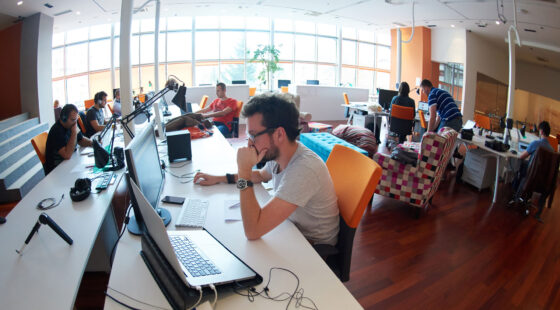Hiring the right talent in Australia isn’t as simple as it once was. With rising salaries, a shrinking pool of qualified professionals, and shifting project demands, companies are rethinking how they build their teams. It’s no longer just about filling roles but choosing the right hiring strategy to support long-term goals.
Whether you’re running a startup, scaling a growing business, or managing large-scale delivery, one key question often comes up: Do you hire locally or explore offshore development?
In this article, we’ll break down the trade-offs between offshore and local hiring in the Australian market, looking at cost, time, and quality. The goal isn’t to declare one option “better,” but to help you understand which model delivers more value based on your needs and context.
The Current Hiring Landscape in Australia
Australia is a country with a highly skilled workforce, but it’s also facing ongoing talent shortages, especially in tech, engineering, finance, and creative sectors. According to a 2024 Skills Priority List from Jobs and Skills Australia, roles like software engineers, cybersecurity specialists, and digital marketing professionals are all in short supply. Demand continues to outpace local talent availability.
Meanwhile, Australian salary expectations have climbed sharply. Tech roles in particular have seen double-digit salary increases since 2023, with cybersecurity professionals and cloud architects often commanding over $160,000 annually, not including benefits. Add hiring delays and high attrition rates to the mix, and the pressure on local hiring strategies becomes clear.
As a result, more companies are looking beyond their borders – to regions like Southeast Asia, Eastern Europe, and Latin America – for highly qualified offshore talent that can integrate into remote or hybrid teams.
Cost: Managing Budgets Without Compromising Capability
Cost is one of the most cited reasons businesses turn to offshore development. But how do the numbers compare?
Local Hiring in Australia
Hiring locally offers a high degree of control and cultural alignment, but comes with substantial direct and indirect costs:
- Base salaries: A mid-level software developer in Sydney earns between $90,000 and $125,000 annually.
- On-costs: Superannuation, payroll tax, insurance, and benefits can add 20–30% on top of base salaries.
- Recruitment costs: Hiring fees, job ads, and time spent interviewing can cost thousands per role.
- Retention and turnover: With high competition, companies face frequent churn, requiring constant reinvestment.
For startups and SMEs, these figures quickly stretch budgets, especially when trying to scale fast.
Offshore Development
Offshore hiring presents a different picture. By working with trusted offshore providers or building remote teams directly, companies can often access talent for 40-70% less than local rates, depending on the role and region.
- Lower base salaries: An average developer in Eastern Europe might earn between $20,000 and $45,000, depending on the location and seniority level.
- Lower onboarding costs: Offshore partners often handle HR, payroll, and compliance as part of the service.
- Infrastructure savings: No need for physical office space, equipment, or employee perks.
However, it’s important to factor in hidden costs like integration, training, project management, and potential rework from misaligned expectations. Cutting corners to save money can cost more in the long run if the offshore setup isn’t structured properly.
Verdict on Cost
- Local hiring offers depth and stability but is expensive and slower to scale.
- Offshore development provides a cost-effective way to expand capabilities, but requires strong processes and oversight.
For many Australian businesses, a hybrid model is emerging as the sweet spot: retaining local leaders and strategic roles while delegating execution to offshore teams.
Time: Speed to Hire, Speed to Deliver
Speed is often as important as cost. Companies that can scale up quickly, deliver faster, and adapt to new demands have a competitive edge.
Local Hiring Timelines
Recruiting skilled professionals in Australia can take anywhere from 4 to 12 weeks, depending on the role and location. In regional areas or niche industries, it can take even longer. Add onboarding, training, and ramp-up time, and it could be 3–6 months before a new hire is fully productive.
Delays in hiring often mean delayed product releases, missed opportunities, and burned-out existing staff. For growing teams or urgent projects, that’s a serious liability.
Offshore Hiring Timelines
Offshore providers typically offer ready-to-deploy talent with shorter onboarding times. Businesses can onboard developers, QA testers, designers, or support personnel in 1–3 weeks, depending on the setup. The offshore team can often begin contributing within days, especially if they’ve been pre-vetted or are part of a managed delivery team.
Global time zones also offer the chance to create round-the-clock workflows. For example, Australian teams can hand off work to developers in India or Eastern Europe at the end of their day and have progress by morning.
Of course, time zones can also create coordination challenges, so effective handovers, documentation, and tools like Slack, Jira, and Loom are critical.
Verdict on Time
- Local hiring is slower and more rigid, though beneficial for building a long-term, embedded culture.
- Offshore development is faster to scale and can dramatically shorten product delivery cycles – if collaboration is structured intentionally.
For teams needing fast results without compromising quality, offshore models offer clear advantages in time-to-productivity.
Quality: Skills, Standards, and Collaboration
Quality is where many business leaders pause. The common assumption is that offshore teams may be cheaper, but they’re less skilled or reliable. In reality, quality depends more on how teams are sourced and managed than on their physical location.
Local Talent Quality
Australia has a world-class education system and a strong professional workforce. Hiring locally offers:
- Cultural alignment and shared business norms
- Ease of communication and real-time collaboration
- Deep knowledge of local market trends, customer behavior, and compliance needs
However, quality still varies widely between individuals, and even top performers can be hard to retain in a competitive market.
Offshore Talent Quality
Offshore development doesn’t mean lower standards – it just means sourcing talent from a different pool. Today, offshore professionals often have:
- Degrees from international universities
- Certifications in cloud, cybersecurity, or product design
- Experience working with global companies, including Australian clients
- Familiarity with agile, DevOps, and remote collaboration
Countries like the Philippines, India, Vietnam, Ukraine, and Argentina have growing tech sectors and strong English proficiency. Many offshore companies employ the same delivery frameworks as onshore teams and have earned ISO 27001 certification. Svitla Systems, for instance, is an ISO 9001:2015 and SOC 2 Certified Provider. You can make sure we uphold the strictest privacy and security guidelines for customer data in this way.
The key factor is fit, not just skills, but communication style, ownership mindset, and ability to plug into your team’s rhythm. This is why some companies choose “embedded” offshore models, where offshore talent is managed as part of the local team, not as a separate unit.
Collaboration and Oversight
Regardless of where talent sits, quality relies on clear expectations, shared tools, and strong leadership. Offshore success requires:
- Defined KPIs and performance metrics
- Regular syncs and async updates
- A clear escalation path for blockers
- Alignment on timelines, outputs, and priorities
When these are in place, many Australian businesses report offshore teams outperforming local hires in both speed and consistency.
Verdict on Quality
- Local hiring offers quality with cultural fluency and local market knowledge.
- Offshore hiring can match or exceed quality, if teams are well-vetted and integrated.
The best results come from blending local strategic oversight with global execution talent, ensuring both quality and continuity.
When to Choose Offshore Development vs. Local Hiring
The objectives, project requirements, budget, and schedule of your business will determine whether to hire local or offshore. Every model has its own advantages and disadvantages. The table below summarizes key factors to consider, helping you decide which approach suits your business best.
| Factor | Offshore development | Local hiring |
| Cost | Lower labor and operational costs, potential hidden costs (training, management) | Higher salaries, benefits, office space, and compliance costs |
| Time to hire | Faster access to large talent pools, quicker scaling | Longer recruitment cycles, limited local talent availability |
| Scalability | Easily scale teams up or down based on project needs | Scaling is limited by budget and local hiring market conditions |
| Quality of talent | Access to niche skills globally, requires strong management to ensure standards | Access to niche skills globally requires strong management to ensure standards |
| Communication & collaboration | Time zone differences and language barriers can pose challenges, requires robust processes | In-person collaboration, easier real-time communication |
| Compliance & security | Must ensure offshore partners meet regulatory and security standards | Easier to enforce local regulations and data privacy laws |
| Best use cases | Routine tasks, large-scale projects, niche skill access, 24/7 support | Leadership roles, customer-facing jobs, compliance-sensitive tasks |
| Cultural fit | Can be harder to align with company culture and local market nuances | Stronger alignment with company culture and local market insights |
| Management overhead | Requires clear KPIs, communication protocols, and workflow integration | More straightforward management with direct supervision |
Many companies now operate with a hybrid model – combining local leadership with distributed delivery teams. This model gives them the strategic control of local hires, with offshore development's cost and scaling benefits.
For example:
- A Sydney-based product manager leads a cross-border team with frontend developers in the Philippines and QA engineers in Eastern Europe.
- A Brisbane creative agency uses an offshore team of video editors and designers in Vietnam, managed by a local account director.
- A fintech startup in Melbourne builds its data engineering team offshore, while keeping compliance and architecture in-house.
This blended model allows for sustainable growth, cost flexibility, and resilient delivery operations.
Wrapping Up
Choosing between offshore development and local hiring isn’t always straightforward. It depends on where your business is today and where you want to go next. Are you scaling fast and need to move quickly without overspending? Offshore development might give you the speed and flexibility you’re looking for. Need strong local insight or leadership that’s deeply embedded in your market? Local hiring still plays an essential role.
Choosing between offshore development and local hiring isn’t about finding the “better” option – it’s about what makes the most sense for your goals, your team, and where you are in your growth journey. For many Australian businesses, the right answer lies in combining both: offshore teams that deliver with speed and precision, and local teams that lead with strategy, market knowledge, and cultural understanding.
At Svitla Systems, we help companies across Australia strike that balance. We're here to help you whether you're just starting out with offshore development or optimizing a hybrid team model. Contact us to discuss how we can strengthen your team, whether onshore, offshore, or in combination.





